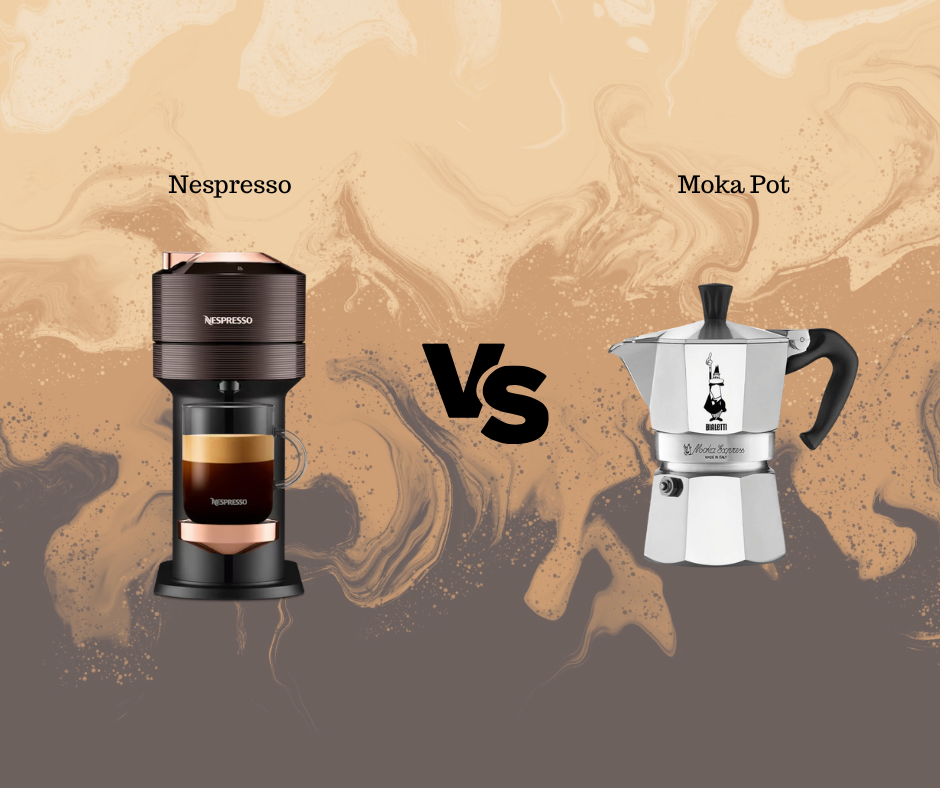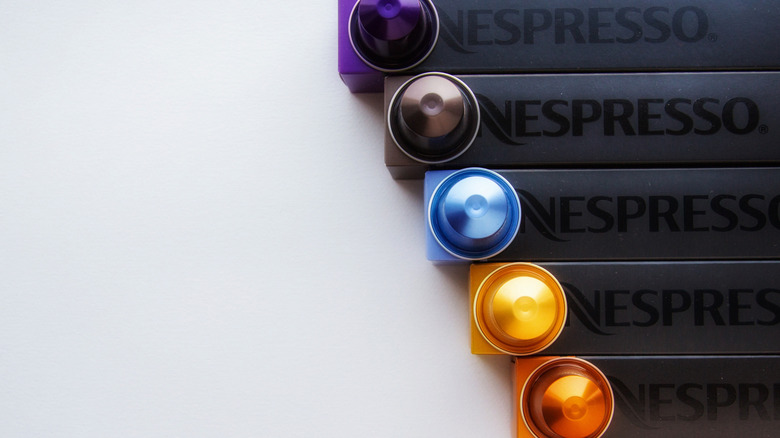Craving a rich, flavorful espresso but don’t have an espresso machine? No problem! Making espresso with instant coffee is a practical and surprisingly effective alternative. This method is perfect for those who love a quick caffeine fix without the hassle of fancy equipment. Whether you’re a busy professional, a student on a budget, or just someone who loves the convenience, instant coffee espresso can be your go-to solution.
In this guide, we’ll explore the simple steps and clever tricks on how to make espresso with instant coffee. You’ll learn why this method is appealing, how it saves time, and how it can deliver a satisfying espresso experience right from the comfort of your kitchen. Let’s dive into the world of instant coffee espresso and discover how easy and practical it can be!
Understanding Espresso and Instant Coffee
Espresso is a concentrated coffee brewed by forcing hot water through finely-ground coffee beans under high pressure. It’s known for its strong flavor, thick consistency, and rich crema on top. Unlike regular drip coffee, espresso has a more intense and robust taste, often used as a base for popular drinks like lattes and cappuccinos.

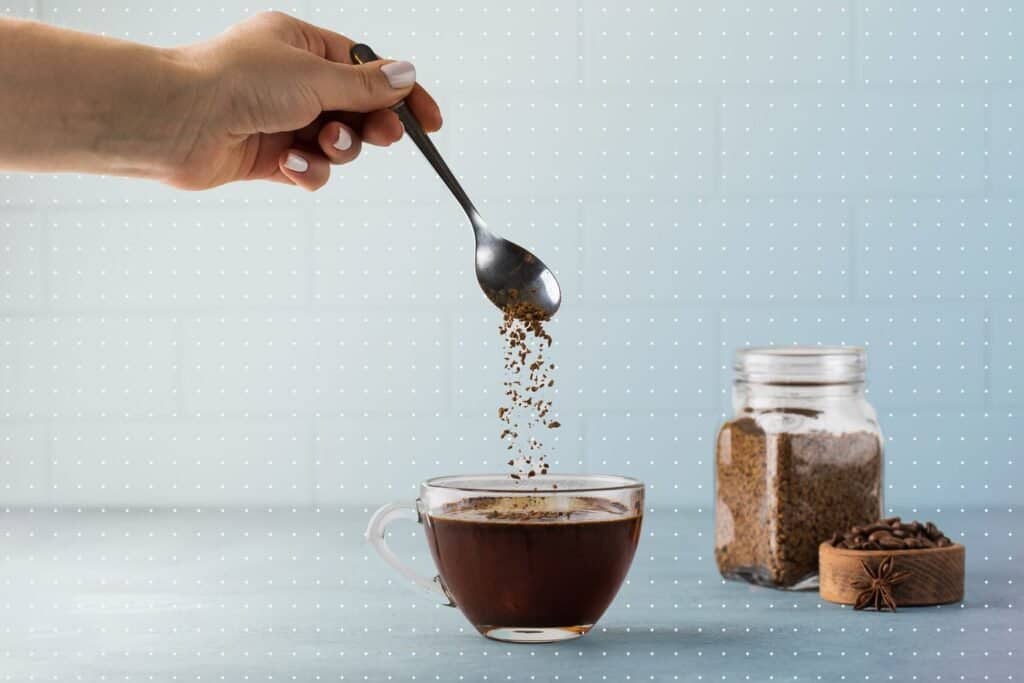
Instant coffee, on the other hand, is made by brewing coffee beans and then freeze-drying or spray-drying the liquid to create soluble coffee crystals. It’s designed for quick and easy preparation, requiring just hot water to dissolve and make a cup of coffee. While it doesn’t have the same depth of flavor as freshly ground beans, it offers a convenient and time-saving alternative.
Why Use Instant Coffee for Espresso?
- Convenience: Instant coffee is quick to prepare, perfect for busy mornings.
- No Equipment Needed: Skip grinding beans and using complex espresso machines.
- Cost-Effective: Instant coffee is generally more affordable than premium espresso beans.
- Easy Cleanup: Minimal cleanup compared to traditional espresso-making.
- Surprisingly Satisfying: With the right techniques, instant coffee can deliver a rich, bold coffee experience.
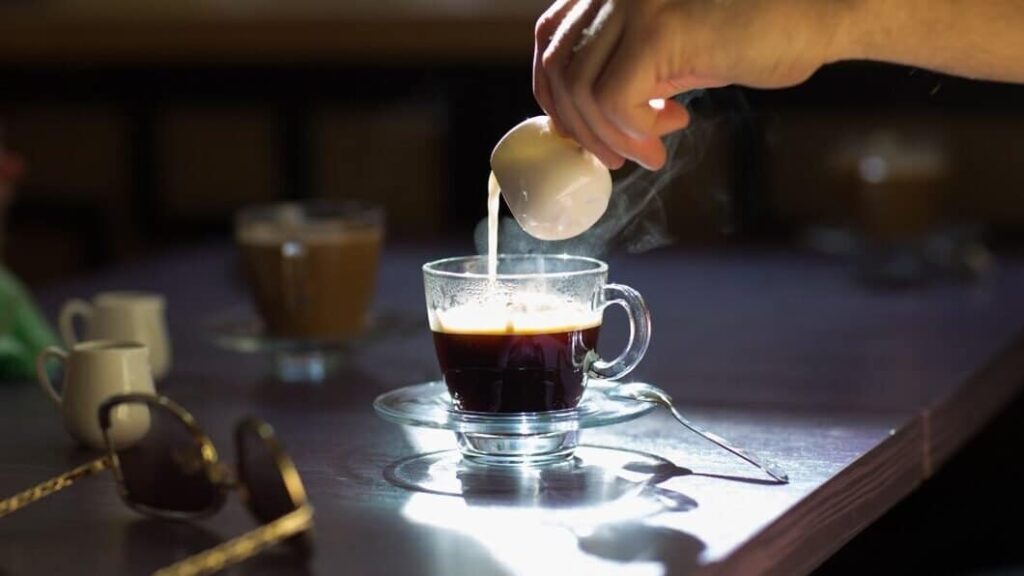
Essential Equipment
To make espresso from instant coffee at home, you don’t need a lot of fancy gear. Here’s a list of the minimal tools required:
- Instant Coffee: Choose a high-quality instant coffee to get the best possible flavor.
- Hot Water: You’ll need a kettle or any device that can heat water to the right temperature.
- Espresso Cup: A small cup to hold your espresso, giving it an authentic feel.
- Spoon: For measuring and stirring the instant coffee and hot water mixture.
- Milk Frother (Optional): If you like milk-based espresso drinks like lattes or cappuccinos, a handheld frother can be handy.

With these simple tools, you can easily whip up a cup of espresso-like coffee without any fuss.
The Role of Water Temperature
Water temperature plays a crucial role in making a good espresso with instant coffee. The ideal temperature for brewing coffee is around 195-205°F (90-96°C). Using water that’s too hot can scorch the coffee, leading to a bitter taste. Conversely, water that’s not hot enough can result in a weak and under-extracted coffee.
When making espresso with instant coffee, aim to heat your water just below boiling. This ensures that the coffee dissolves properly, bringing out the best possible flavors. A good rule of thumb is to boil the water and then let it sit for about 30 seconds before pouring it over the instant coffee. This simple step can make a significant difference in the taste and quality of your homemade espresso.
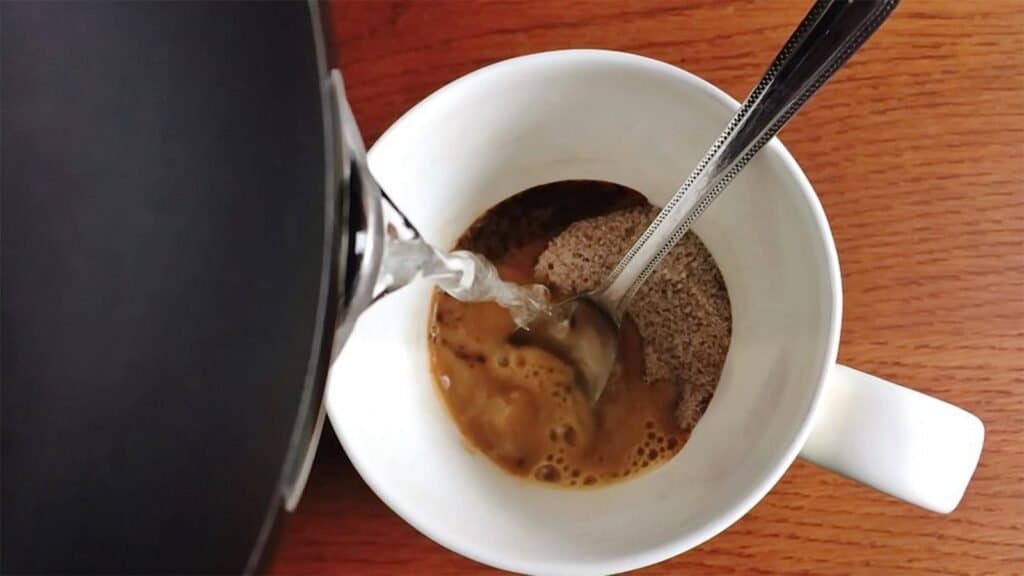
Step-by-Step Guide to Making Espresso with Instant Coffee
Step 1: Gather Your Ingredients and Equipment
- High-quality instant coffee
- Hot water (just below boiling)
- Espresso cup
- Spoon
- Optional: milk and a frother if you want a milk-based drink
Step 2: Measure the Instant Coffee
- Use 1 to 2 teaspoons of instant coffee per shot of espresso. Adjust based on your preference for strength.
Step 3: Heat the Water
- Boil the water and then let it sit for about 30 seconds to reach the optimal temperature of around 200°F (93°C).
Step 4: Combine Coffee and Water
- Place the instant coffee into your espresso cup.
- Pour 2 ounces (about 60 ml) of hot water over the instant coffee. The ratio is crucial: aim for 1 part coffee to 2 parts water to mimic the strong, concentrated nature of espresso.
Step 5: Stir Thoroughly
- Stir the coffee and water mixture vigorously with a spoon to ensure all the coffee granules are fully dissolved and well mixed.
Step 6: Optional Milk Frothing
- If you prefer a latte or cappuccino, heat and froth your milk using a frother. Pour the frothed milk over your espresso for a creamy, rich beverage.
Step 7: Enjoy Your Espresso
- Sip your homemade espresso straight or use it as a base for other coffee drinks. Savor the convenience and simplicity of this method!
With these steps, you can enjoy a quick and easy espresso-like experience using instant coffee, perfect for any time you need a caffeine boost.
Tips for Enhancing Flavor
While making espresso with instant coffee is straightforward, a few tips can elevate the taste and make your coffee experience even better:
- 1. Use Filtered Water: Always use filtered water to avoid any off-tastes from tap water. Clean water makes a significant difference in the final flavor of your espresso.
- 2. Pre-Warm Your Cup: Warm your espresso cup with hot water before brewing. This helps maintain the temperature of your espresso, ensuring it stays hot and flavorful.
- 3. Adjust Coffee Strength: Experiment with the amount of instant coffee to find your preferred strength. Start with 1 to 2 teaspoons per shot and adjust based on your taste.
- 4. Add a Pinch of Salt: A tiny pinch of salt can balance bitterness and enhance the overall flavor profile of your espresso.
- 5. Sweeten to Taste: If you prefer a sweeter espresso, add sugar or a sweetener of your choice. Consider trying different types of sweeteners, such as honey or flavored syrups, to find your favorite combination.
- 6. Experiment with Spices: Adding a dash of cinnamon, nutmeg, or cocoa powder can add a delightful twist to your espresso, making it more aromatic and flavorful.
- 7. Quality Matters: Invest in a high-quality instant coffee. Premium brands tend to have better flavor and a more authentic coffee experience.
- 8. Milk Options: For a creamier texture, use whole milk or non-dairy alternatives like almond or oat milk. Frothing the milk can add a luxurious touch to your espresso-based drinks.
Common Mistakes to Avoid
Making espresso with instant coffee is simple, but there are a few common mistakes that can impact the quality of your brew. Here’s how to avoid them:
1. Using Boiling Water:
- Mistake: Pouring boiling water directly over instant coffee.
- Solution: Let the boiled water sit for about 30 seconds before using it. The optimal temperature is around 200°F (93°C) to prevent scorching the coffee.
2. Incorrect Coffee-to-Water Ratio:
- Mistake: Using too much or too little coffee for the amount of water.
- Solution: Stick to the recommended ratio of 1 to 2 teaspoons of instant coffee per 2 ounces of water. Adjust based on personal preference, but keep the balance for a concentrated flavor.
3. Not Stirring Enough:
- Mistake: Not thoroughly mixing the coffee and water.
- Solution: Stir vigorously to ensure all coffee granules are dissolved, resulting in a smooth and consistent brew.
4. Using Low-Quality Instant Coffee:
- Mistake: Choosing cheap, low-quality instant coffee.
- Solution: Invest in a reputable brand known for better taste and quality. High-quality instant coffee significantly improves the flavor.
5. Neglecting to Pre-Warm the Cup:
- Mistake: Brewing directly into a cold cup.
- Solution: Pre-warm your cup with hot water to keep the espresso hot and enhance its flavor.
6. Ignoring Water Quality:
- Mistake: Using tap water that might have off-tastes.
- Solution: Use filtered water to ensure a clean, pure taste in your espresso.
7. Skipping Optional Enhancements:
- Mistake: Not experimenting with add-ins like milk, spices, or sweeteners.
- Solution: Try adding a pinch of salt, a dash of cinnamon, or frothing some milk to customize and improve your espresso experience.
Comparing Espresso from Instant vs. Ground Coffee
When it comes to espresso, traditional ground coffee beans and instant coffee offer distinctly different experiences. Here’s a comparison of the two:
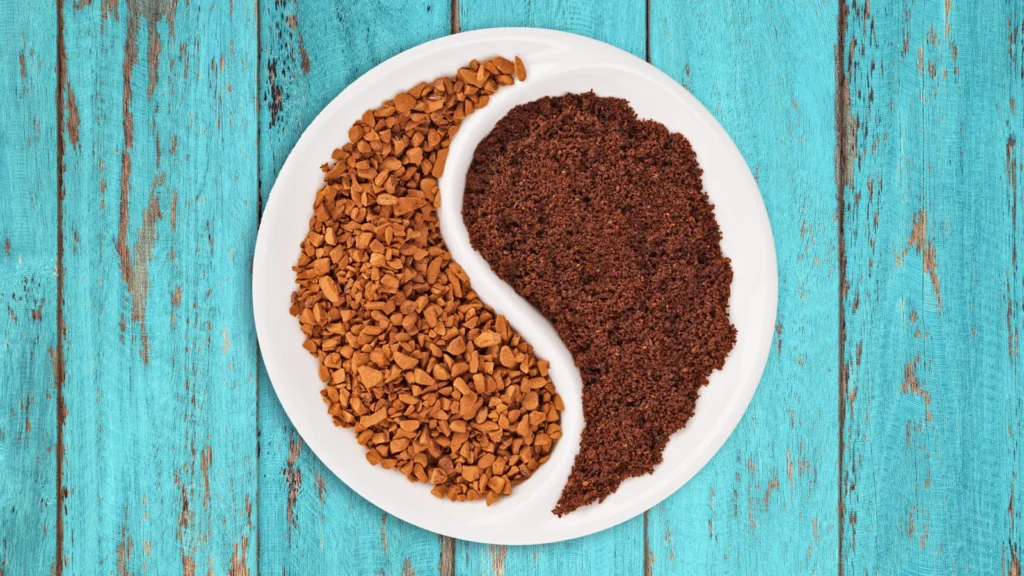
Flavor Profile:
- Ground Coffee Beans: Espresso made from freshly ground beans has a rich, complex flavor with a pronounced crema on top. The process of forcing hot water through the finely-ground coffee under high pressure extracts oils and flavors that create a full-bodied, aromatic cup.
- Instant Coffee: Espresso made from instant coffee lacks the depth and complexity of its freshly brewed counterpart. While it can still be strong and satisfying, it doesn’t produce the same rich crema and often has a simpler, more one-dimensional flavor.
Preparation Time:
- Ground Coffee Beans: Preparing espresso from ground beans requires more time and effort. You need to grind the beans, measure them correctly, tamp them into the portafilter, and use an espresso machine to brew the coffee.
- Instant Coffee: Making espresso from instant coffee is quick and straightforward. It involves simply dissolving the instant coffee in hot water, making it an ideal option for those in a hurry.
Convenience:
- Ground Coffee Beans: Requires an espresso machine and additional equipment, along with regular cleaning and maintenance.
- Instant Coffee: Needs minimal equipment, just a cup and hot water, making it highly convenient and portable.
Cost:
- Ground Coffee Beans: Typically more expensive due to the cost of high-quality beans and the investment in an espresso machine.
- Instant Coffee: Generally more affordable, both in terms of the coffee itself and the lack of required equipment.
Can Instant Coffee Match the Quality of Espresso Beans?
While instant coffee can’t fully replicate the quality and taste of real espresso, it can come surprisingly close with the right techniques. High-quality instant coffee brands have made significant improvements, offering richer and more robust flavors than ever before. However, the lack of freshly ground beans and the high-pressure extraction process means it will always fall short of the true espresso experience.
Instant coffee provides a convenient and cost-effective alternative that can still deliver a satisfying and enjoyable cup of coffee, especially when you’re short on time or resources. For those who value speed and simplicity over the intricate flavors of traditional espresso, instant coffee can be a worthy substitute.

User Experiences and Testimonials
Hearing from others who have tried making espresso with instant coffee can provide valuable insights and reassurance. Here’s what some coffee enthusiasts have to say about their experiences:
These testimonials highlight the practicality and appeal of making espresso with instant coffee. Whether for convenience, cost, or simply out of necessity, many find it a valuable alternative to traditional espresso.
Disclosure: Our blog contains affiliate links to products. We may receive a commission for purchases made through these links. However, this does not impact our reviews and comparisons. We try our best to keep things fair and balanced, in order to help you make the best choice for you.

